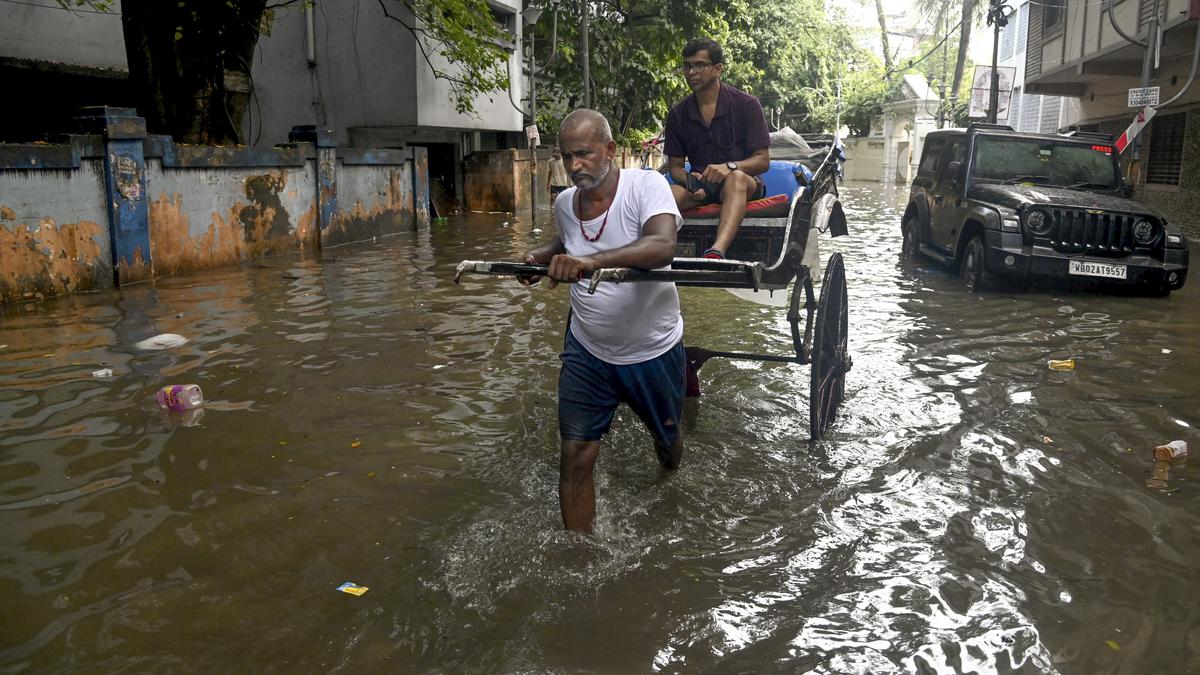Each year, urban India braces for the monsoon — contractors are deployed, drains desilted, and emergency protocols rehearsed. Yet, when the rain finally arrives — often untimely and more intense than expected — headlines are dominated by flooded roads, waterlogged homes, and stranded commuters. The deeper issue is that our cities are often still designed for a climate that no longer exists.
Northern States are seeing heavy flooding even in September, with all of Punjab’s 23 districts being hit by floods. Delhi and Gurugram have been inundated by intense rains, and Uttarakhand and Himachal Pradesh are experiencing frequent cloudbursts. In the east, Kolkata is facing torrential rains.
Timing, amount, and intensity
But the rains came early too. In May, Mumbai recorded 135.4 mm of rainfall in just 24 hours, followed by 161.9 mm the next day. Delhi recorded 81 mm fall within a few hours on the same day, overwhelming the drainage systems. This shift in rainfall timings is not new; yet our preparedness remains tethered to outdated schedules. Drain cleaning, for instance, still follows the June monsoon calendar.
Cities must follow the rain to be able to bridge the gap between schedules, and readiness and reality. An analysis by the Council on Energy, Environment and Water shows that about 64% of Indian tehsils have seen a rise in the frequency of heavy rainfall days by 1-15 days, especially in Maharashtra, Tamil Nadu, Gujarat, and Karnataka. The consequences for urban systems are significant, from localised flooding to disruptions in essential services. In the last two decades, floods have caused most of the loss to life and property from natural disasters in India. Today, a single flood can cause damages of some ₹8,700 crore, with such events becoming increasingly frequent.
The challenge is not just the amount of rainfall, but also the intensity. Intensity, Duration, Frequency (IDF) curves, which track rainfall patterns over time, offer an interesting picture. For instance, CEEW’s analysis of daily rainfall from 1970 to 2021 in the coastal city of Thane shows that one-hour rainfall now reaches 50 mm once every two years, and about 80 mm per hour once every 50 years. This means such heavy rainfall can be expected to occur within hours, leaving little room for cities to respond. There is also a sharp difference between how much rain falls in one hour versus three hours, revealing that rainfall that once spread across a day may now have a higher chance of falling within an hour. We propose three interlinked actions to prepare Indian cities better for the monsoons and flood-proof them.
Preparing for the monsoon
First, city authorities should incorporate sub-daily rainfall analysis into city monsoon planning. Municipalities must move beyond long-term averages and integrate recent patterns and short-duration, high-intensity rainfall events that unfold within a few hours, into infrastructure design. Real-time data on sub-daily rainfall, which occurs over intervals shorter than 24 hours, must inform citizens about drainage operations and upgrades. For instance, the Brihanmumbai Municipal Corporation (BMC) has announced this year that it will widen its drains to handle up to 120 mm of rainfall in an hour.
While India’s monsoon officially spans 100-120 days, just a few hours of intense rain across select days account for most of the seasonal rainfall. Yet, maintenance and planning assume a uniform spread. This illusion of consistency leads to systems that fail not due to excessive seasonal totals, but hourly extremes. Recognising this compression is the first step towards resilience.
Second, align cleaning of storm water drains and municipal solid waste management calendars. An overlooked cause of urban flooding is unmanaged waste — plastic, debris, and litter frequently block drains. Yet storm water and waste are handled by separate departments on different schedules. While the Ministry of Housing and Urban Affairs recommends drain cleaning before, during, and after the monsoon, its effectiveness hinges on coordination with waste collection. Even a freshly cleaned drain can clog again if garbage is left uncollected nearby. Ideally, storm water and sanitation departments must coordinate, especially during high-risk periods. Rainfall alerts from the India Meteorological Department should automatically trigger joint sanitation drives and drain inspections in vulnerable areas. In Vijayawada, such coordination — through monsoon response teams composed of officials from the sanitation, engineering, and planning departments — has reduced waterlogging and eased conditions for residents.
Third, city authorities must update IDF curves every 5-10 years to ensure that infrastructure keeps pace with evolving rainfall patterns. Without this, new drainage systems will continue to rely on outdated data, leaving them ill-equipped to handle present day storm water run-off volumes. In response to recent intensifying rains, the BMC has also proposed expanding storm water capacity and preparing a new drainage master plan based on updated trends. Drainage design should also be based on micro-catchment-level hydrological analysis that accounts for topography, which affects peak discharge during storms. New systems must be separated from the sewerage networks to avoid overload and ensure efficiency. We are not losing to the rain, but to the idea that the rain fits into seasonal boxes. Instead of asking when the monsoon will begin, we need to ask, are we prepared for the rain already falling?
Pratha Mishra, Research Analyst, Council on Energy, Environment and Water; Nitin Bassi, Fellow, Council on Energy, Environment and Water. Views are personal
Published – September 25, 2025 02:17 am IST

